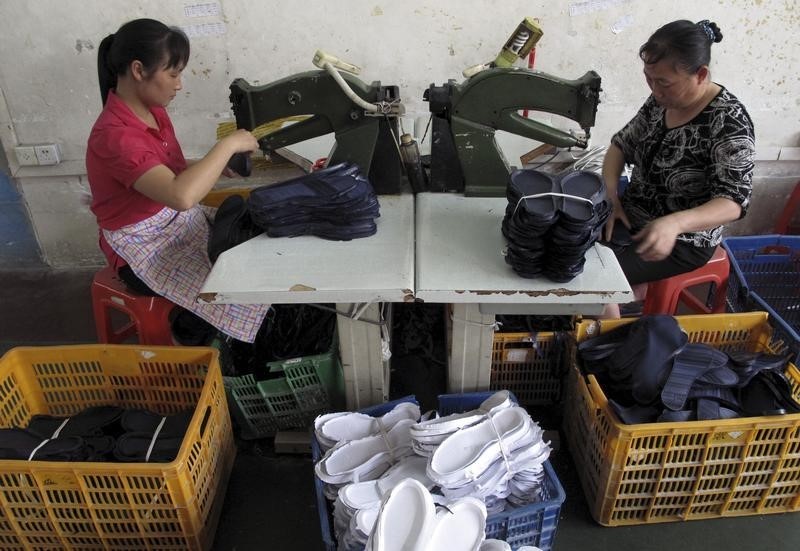By Kevin Yao
BEIJING (Reuters) - Activity in China's factory sector expanded slightly in June though not as much as expected, while growth in the services sector sped up, official surveys showed, offering some signs that the world's second-largest economy may be starting to slowly level out after a raft of support measures.
Beijing has rolled out a flurry of steps since last year, including interest rate cuts and more infrastructure spending, but analysts remain wary about the outlook given the still-weak property market, erratic global demand for China's exports and fears of a collapse in its wild stock market.
The government is due to release second-quarter gross domestic product data on July 15 and many economists expect growth to dip below 7 percent, which would be the weakest performance since the global financial crisis.
"In general, the softness in the manufacturing sector remains, requiring more policy recalibration," Liu Li-Gang and Zhou Hao at ANZ said in a research note.
"Looking ahead, as real interest rates faced by Chinese companies remain elevated, we see that further monetary easing is still highly needed."
With demand weak at home and abroad, factory growth remained tepid, with the reading just above the 50 point level that separates contraction from expansion on a monthly basis.
The official Purchasing Managers' Index (PMI) stood at 50.2 in June, unchanged from the previous month's reading, the National Bureau of Statistics. Analysts polled by Reuters had predicted it would edge up to 50.3.
"Business development momentum is still insufficient, and domestic and foreign demand remains weak," the bureau said.
The sub-index for new orders - a proxy for domestic and foreign demand - fell to 50.1 in June from May's 50.6. New export orders fell to 48.2 from 48.9 in May, indicating contraction in foreign demand for a ninth straight month.
And stressed factories continued to shed jobs, with the employment sub-index inching down to 48.1 from May's 48.2.
A private factory survey also released on Wednesday showed activity contracted for the fourth straight month in June but at a slower pace than in May. The official survey focuses on larger, state-owned firms, and the private one on small and mid-sized companies which are facing tougher financial and operating conditions.
The central bank cut lending rates on Saturday for the fourth time since November and trimmed the amount of cash that some banks must hold as reserves, stepping up efforts to support the slowing economy.
ANZ expected the central bank to further cut interest rates by another 25 basis points (bps) in the third quarter, and cut banks' reserve requirement by an additional 100bps in the second half.
SERVICES SHINES
Meanwhile, the official services PMI rose to 53.8 from May's 53.2, the bureau said, suggesting growth in that sector quickened slightly in June, offsetting some of the broader economic drag from ailing factories.
The new orders sub-index of the services PMI rose to 51.3 in June from 49.5 in May and the employment sub-index inched up to 49.7 from May's 47.6 as the pace of job shedding eased.
The services sector has accounted for the bigger part of China's economic output for at least two years, with its share rising to 48.2 percent last year, compared with the 42.6 percent contribution from manufacturing and construction.
"The services sector is also cooling, except the financial sector that has been supported by the stock market," said Lin Hu, an economist at Guosen Securities in Beijing.
Lin believed rising trading volume in the stock market may have lent more support to the economy in the second quarter, though some analysts fear that a further stock plunge may hit consumer confidence and spending and put added strain on the financial system. Weighed down by a property downturn, factory overcapacity and high levels of local debt, China's economic growth in 2015 is seen slowing to around 7 percent - the weakest annual expansion in a quarter of a century.

Property prices and sales have also shown signs of improving in recent months, at least in big cities, but investment remains weak with high local government debt levels and bureaucratic delays thwarting Beijing's efforts to get big infrastructure projects off the ground.